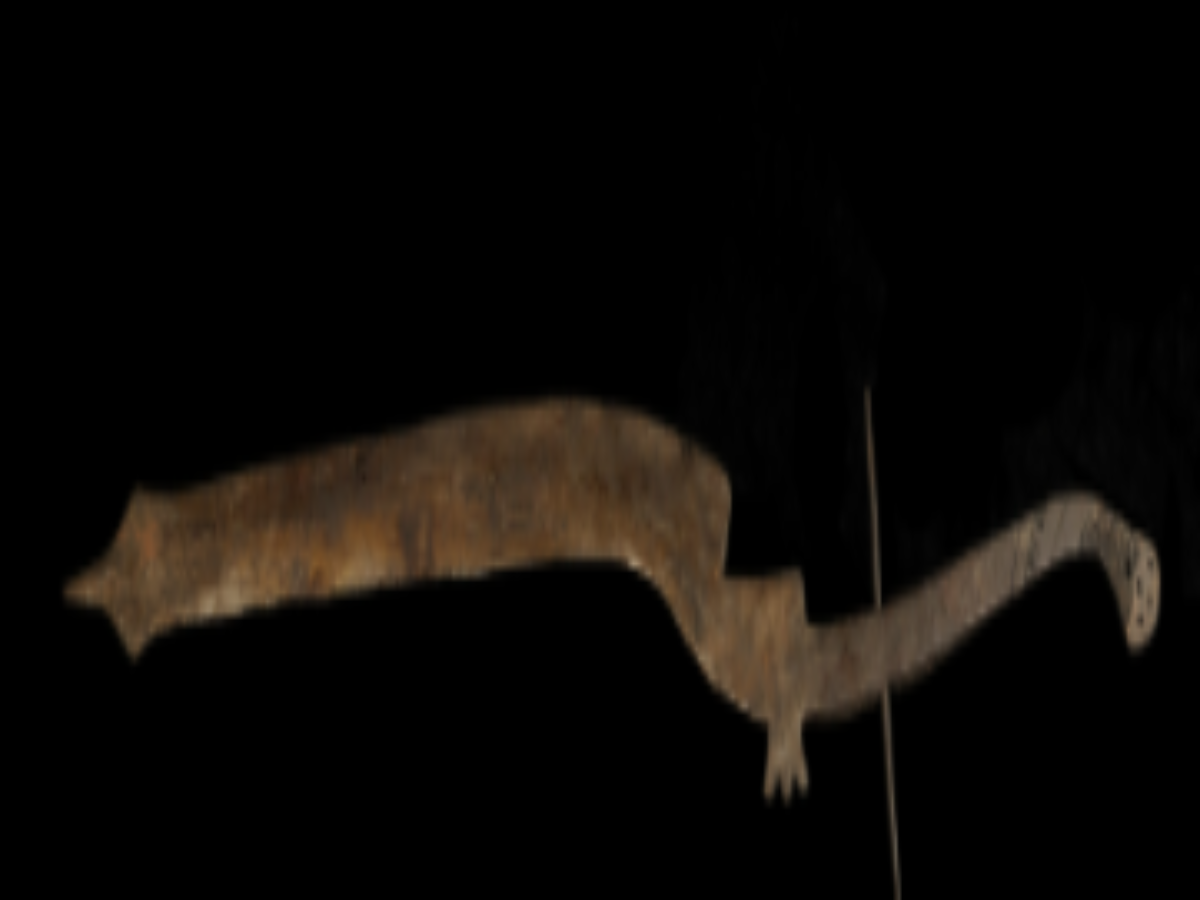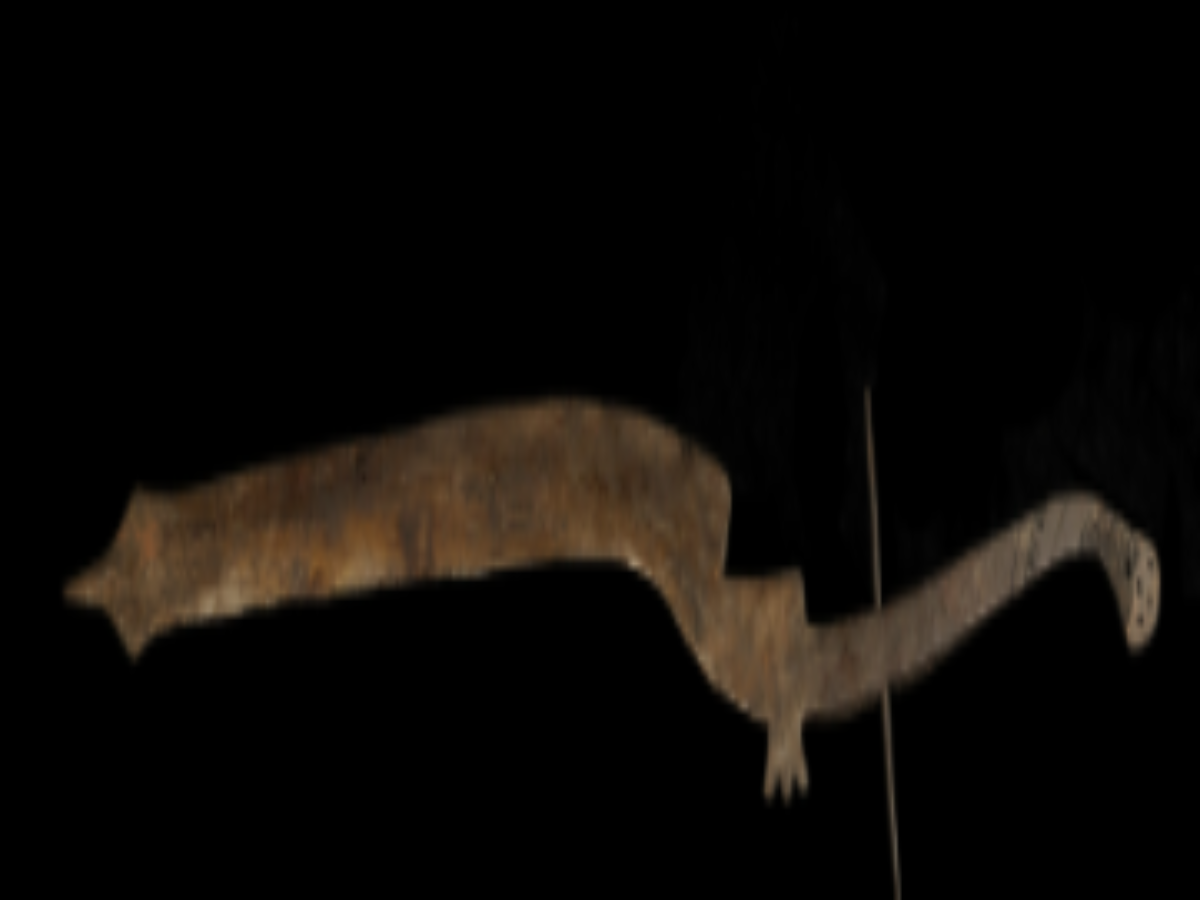State
Tribe Name
Art Type
short description
This iron sword, presumably forged by the Garo tribe of Meghalaya, provides an excellent example of the indigenous people's metallurgy and weapons-making skill. The sword is fabricated from a sheet of iron demonstrating a long and slim blade with sharp slightly curved cutting edges and a pointed tip for good penetrating ability. The lower part of the blade is markedly curved, and an unmistakable 'V' shaped groove is present somewhere near the distal-most curve, perhaps for relieving some weight and improving balance.
Thumbnail

Filter Postion
Left
Filter Background
Off
Theme
Filter Header Image

content
Image

description
This iron sword, presumably forged by the Garo tribe of Meghalaya, provides an excellent example of the indigenous people's metallurgy and weapons-making skill. The sword is fabricated from a sheet of iron demonstrating a long and slim blade with sharp slightly curved cutting edges and a pointed tip for good penetrating ability. The lower part of the blade is markedly curved, and an unmistakable 'V' shaped groove is present somewhere near the distal-most curve, perhaps for relieving some weight and improving balance.
The extended iron component located in thearched area of the blade demonstrated good producing craftsmanship, and the continuation of it into a perforated iron tang further indicates good functional use. It works as a long curved handle secured by fixing one iron nail into one of the perforations on the tang to secure the grip material or perhaps give structural reinforcement. The underside of the handle being flat and comparatively wide has five holes probably meant for the wrapping or binding purposes with natural fibers or cane for better grip and operability.
The Garo, one of the major hill tribes inhabiting Meghalaya, has an age-old martial tradition. Such swords were historically employed in self-defense, hunting, and ritual performances. Form conforms to function but also embodies symbolic power usually associated with the status of a warrior among the Garo people. Today such weapons occupy important sections of tribal heritage classified in museums or utilized in cultural festivals as a symbol of identity and strength.
The extended iron component located in thearched area of the blade demonstrated good producing craftsmanship, and the continuation of it into a perforated iron tang further indicates good functional use. It works as a long curved handle secured by fixing one iron nail into one of the perforations on the tang to secure the grip material or perhaps give structural reinforcement. The underside of the handle being flat and comparatively wide has five holes probably meant for the wrapping or binding purposes with natural fibers or cane for better grip and operability.
The Garo, one of the major hill tribes inhabiting Meghalaya, has an age-old martial tradition. Such swords were historically employed in self-defense, hunting, and ritual performances. Form conforms to function but also embodies symbolic power usually associated with the status of a warrior among the Garo people. Today such weapons occupy important sections of tribal heritage classified in museums or utilized in cultural festivals as a symbol of identity and strength.
Image Mode
landscape
promoted
On
Verified
Off
